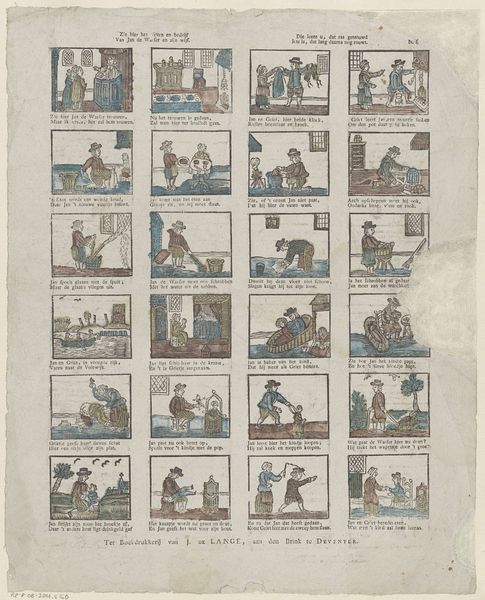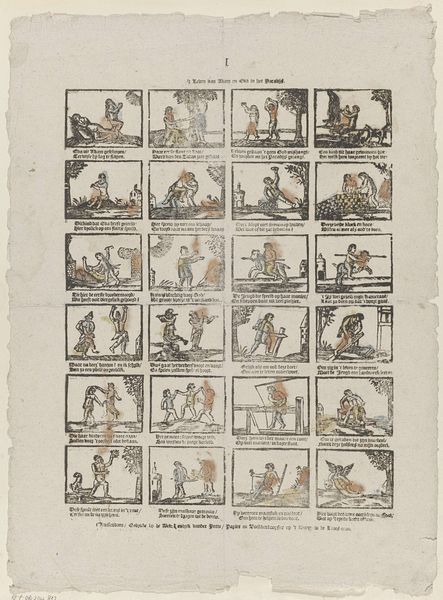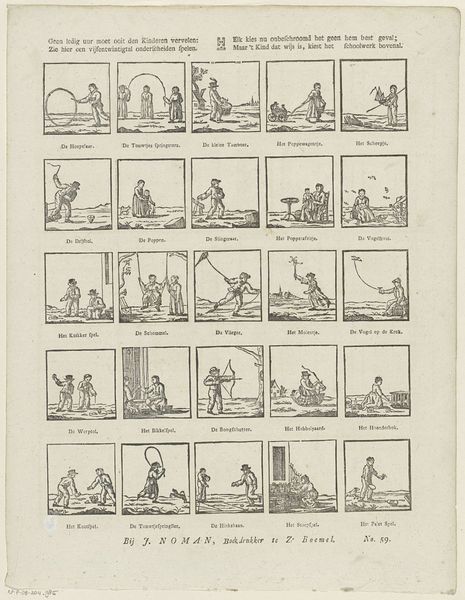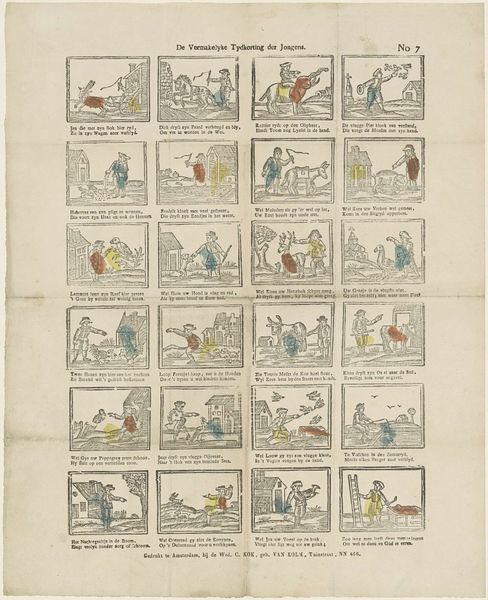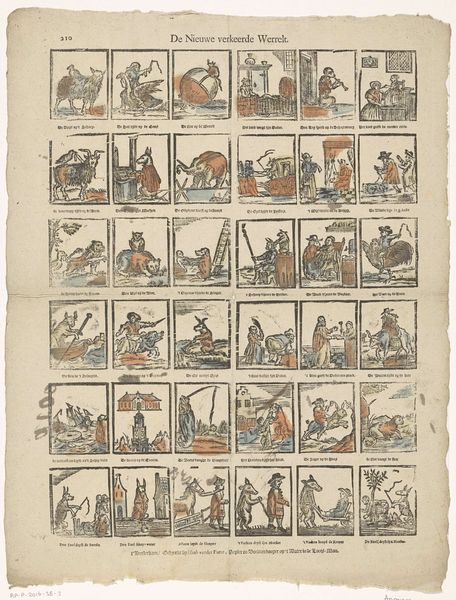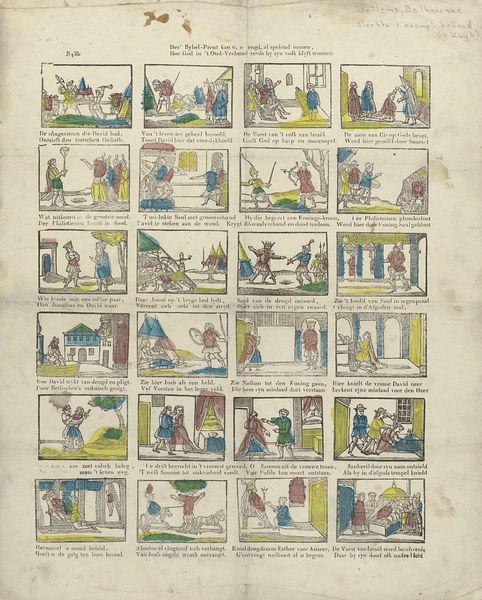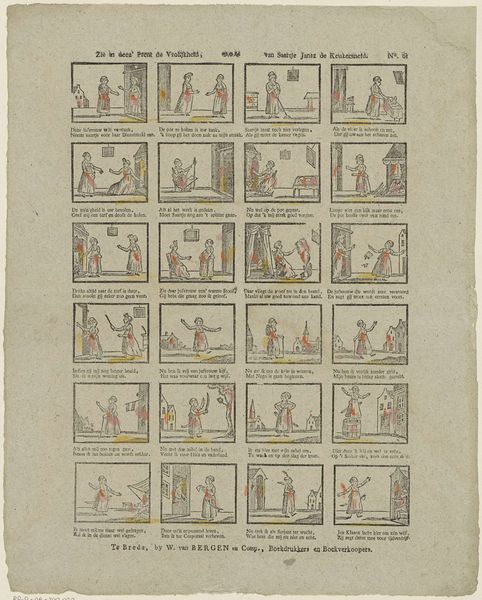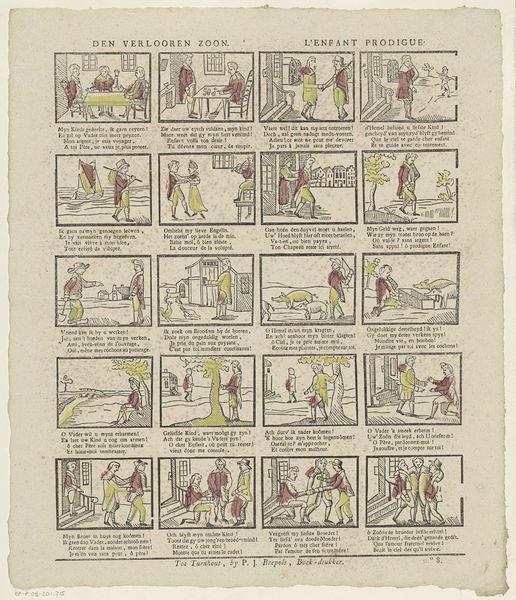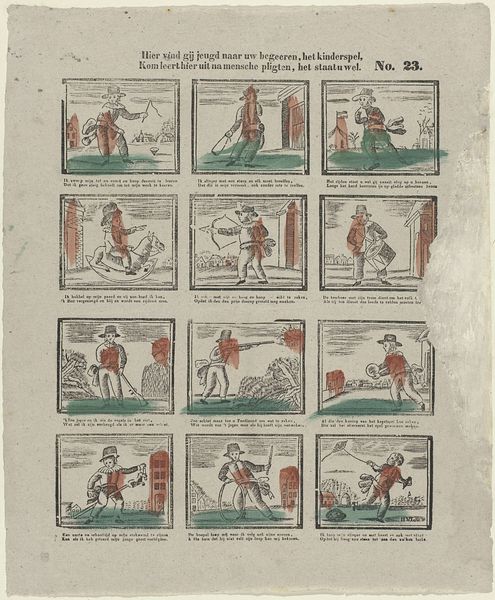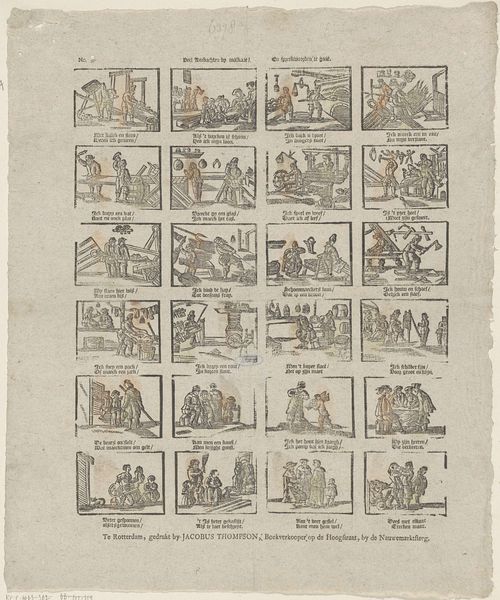
Lieve nederlandsche jeugd! zie hier onderscheiden spelen, / Daar g' uw eigen beeld in ziet, die u zeker zullen strelen 1806 - 1858
0:00
0:00
drawing, print, watercolor, engraving
#
drawing
# print
#
watercolor
#
folk-art
#
romanticism
#
watercolour illustration
#
genre-painting
#
engraving
Dimensions: height 407 mm, width 337 mm
Copyright: Rijks Museum: Open Domain
Curator: This delightful print by Willem Carl Wansleven, created sometime between 1806 and 1858, offers us a glimpse into childhood in the Netherlands. The full title, a bit of a mouthful, translates to "Dear Dutch youth! See here diverse games, where you see your own image, which will surely please you." Editor: Immediately, the stark gender divide strikes me. The print is neatly bisected: "Jongens Spelen"—boys' games—above, and "Meisses Spelen"—girls' games—below. The colors are muted, the lines simple, giving it an almost instructional air. What was the intended audience, do you think? Curator: It’s fascinating, isn’t it? Prints like this were often pedagogical tools. Meant not just for children’s enjoyment, but also to instill societal values. The clear separation reinforces prescribed gender roles, right from an early age. Notice how the boys are engaged in active play—flying kites, wrestling—while the girls are shown with domestic duties like caring for dolls or tending to laundry. Editor: Exactly! And those aren’t just “games”; they are rehearsals for adult life. The boys are learning to compete, to lead. The girls are learning to nurture and maintain the home. It is unsettling to see how directly children are being inducted into these societal structures. The image is very consciously shaping the Dutch identity being presented. Curator: Absolutely. It highlights how ingrained these roles were and reinforces ideas of domesticity and gendered division of labor, ideals that persisted and even became amplified through the 19th century, reflecting anxieties over social change and gender roles. We can see this work, like so many folk art depictions of daily life, through a much more critical lens. Editor: Indeed. What appears innocent at first glance reveals deeper societal currents at work. Even seemingly simple images carry complex political weight, highlighting how cultural norms are perpetuated and contested through art. Understanding the context helps us critically examine such material. Curator: Examining this piece helps us reframe notions of what is considered to be innocent in genre painting. It is always worth remembering art’s involvement in forming societal attitudes and behaviors, no matter how seemingly charming or quaint. Editor: Yes, absolutely. It's important to acknowledge and be aware that representation shapes realities and lived experiences, both past and present.
Comments
No comments
Be the first to comment and join the conversation on the ultimate creative platform.

